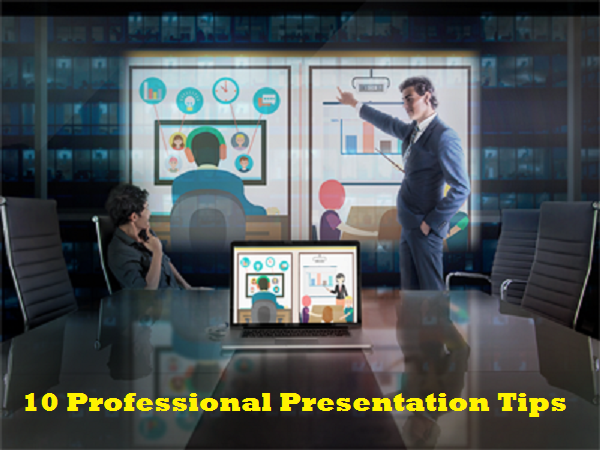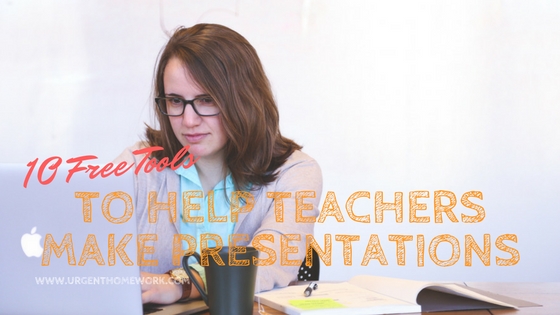Presentations are a great way to explain your ideas to the people. You are the creator of the entire surrounding-lighting, background, font size, transitions, images; they all lie under your control. And you have to use them all in the best way possible, so as to explain your ideas in a better way.
So, let’s get started towards making our presentations better than ever before!
It is a common thing to see people snoring off back in their seats or just text their friends on phone, while someone is speaking their heart out in the front with a presentation running behind on a projector. Such a scene feels bad though but happens a lot. People may lose their interest, and the speaker too may get a feeling that he is not his best to keep the people engaged. And everyone who would have to give a presentation ever in life would like to do their best and keep the people curious and expecting up to what’s next.
The ones whom you follow or like to listen to, how do they do it? How do they keep the people connected to their conversation and discuss their ideas with them? Do they have a secret behind it? Or they do things differently in a way to achieve what they want?
Yes, they do things in a different manner is what all that makes the difference. An interesting presentation with an impressive way of talking with people and presenting yourself. They are not born with it but polish their skills to give such perfect presentations. And when one listens to them, he would surely get a feeling to present as good as your role model one day.
And such a dream is not much hard to achieve! Whenever you are going to give a presentation next for your project, research assignment or anything else, just follow these simple suggestions and see how well things go.
- Add relevant images
Would you like to attend a presentation with just text filled and filled onto the screen, and the speaker just reading it out plainly to the speakers? Of course not. Then avoid giving one such too. The human brain relates better to the images than to text, as it identifies pictures and images better. Hence, use more of images than the text. Keep the text as less as possible in the slides. Rather, you should speak more while explaining them.
But also keep in mind that adding more pictures does not mean that you just fill up your thing with random images, thinking it will work. No, it would just go off the track. Keep images that are relevant and apt for your topic.
- Keep It Straight Simple
KISS! No, that’s not the one you going mushy in your head. It is a simple concept about organizing things to make them more effective. According to this, a presentation should have only keywords mentioned in it, less of sentences and explaining your slides rather than reading from them. See, they are so simple to do! That is what keeping it straight and simple means.
Do not think that using toughest of the words you can see in a dictionary can impress the people well, but talking in a simple language to which every one can relate with will work much better. Similarly, do not write too much in your slides on a topic, as I said earlier. Just keep it short, crisp and to the point.
- Use a good contrast yet keep it readable
It is good to play with colors, but not so much that readers have to struggle to see what is written there. Writing with white on a black background will be interesting, but also the most common and most boring way to present your slides. So, if you want to go a little different, users can try out different colors. Keep a sharp contrast of the text and background color, so that the slides are easily readable.
- Maintain consistency throughout the presentation
A presentation should never go like this:
The beginning of the slide with a bright red background, with the text in bold italics and then gradually with the upcoming slides, the font keeps changing. Also, pictures are kept randomly here and there, with one springing out from the left corner in one slide and sinking in the bottom in the next slide.
You see, such a scene seems so inconsistent with no organized way. It would be a total flop. Never do such a thing in your presentation, especially for professional presentations. Keep the colors and the layout simple, with a similarity in your entire work. Use the same font size, color and type in all the slides and the same go with the colors too. Plan a layout for setting up the images on the slides and then stick to one order only. Playing too much with the pictures would again make the quality of the work go low.
- Do not overdo all the things
It is good to experiment, but not too much. A few good images sound fair enough to be added to the slides, but too much of it would just take away the focus and make it go out of focus. Keep the text as less as possible too, with more usage of just keywords. You can surely add the company’s logo, frames, borders and other things, but a balance is to be strictly maintained.
- Slide composition should be well organized
Plan up things a little before beginning them. Think about the background, the images, font size, font color, page layout, border etc and then organize them in the same way. Keep in mind these simple tips while planning out the layout of your presentation.
- Do not copy and paste the sentences from another slide or link or any other source and just fill up on your slide. Your slide should be yours entirely, not a jumbled up work of other ’s words.
- The design should be simple and not too much. It should not distract the people.
- The font should be easy to read. Keep in mind that it should not be too much curvy or so, making it difficult to read. Use an appropriate color and size too.
- Make it sure that there is sufficient space between the text, points images and other contents of your slides.
- Introduce yourself
Yes, it does matter. Whether the audience in front of you already knows you or not, you should introduce yourself before you proceed further. Tell your name, designation and the reason why you are giving the presentation. A single statement about the purpose of your presentation would be enough. An introduction is important as people will be familiar with you then, and to maintain a professional way.
- Know your audience well
Before you begin with your presentation, you must know who are you going to present- your audience. Have a brief idea regarding the following points before proceeding further:
- Who are all present among the audience?
- What do they know?
- What would they be expecting from you?
- What will be interesting for them?
- What new can you tell them?
- How can you keep them engaged in your presentation and focused on the topic?
Answers to these questions will tell you a lot for what all you have to cover in your presentation. If you do not know the audience, then your presentation may not work that well. For instance, if you are addressing undergraduates of a university but you do not know it and teach them a concept of M.B.A of a top university, it will fly straight above their heads. Hence, keep a note about your audience well in advance.
- The way you present
This can surely make or break everything. Presenting is the thing which is the core of a presentation. After all, a presentation is all around presenting yourself. Keep in mind these following tips to have a great presentation ahead.
- Make good eye contact with the audience. Staring at the fan above or the walls in front of you would just make them feel you are not connecting to them.
- Never read out your slides facing your back to the audience. That is just a big no. you should be knowing well what is there in your every slide so that you can speak it confidently without looking much at it. Prepare your content well beforehand for this. Having a glance at your slide is fine, but do not read them out like a storybook.
- Make sure you move around a little, rather than just standing on one point and giving the entire presentation.
- Body language is also a major factor on which the success of a presentation depends. Be free and positive. Locking your hands at the back or at the front would give a negative sign. Use your hands while explaining although it should not be too much.
- A decent tone to speaking is what is required here; neither too low but not too loud. Make sure you are audible to each and every person present there. But that does not mean that you scream out your words either. Balance your tone and it will all go smooth.
- Do not go too fast while explaining. People will listen to you and think about it. Give them time to do so.
- It is not required to have a dead serious mood all the time while you present. The entire mood of the surrounding depends on you while your present. Keep a bright, positive and cheerful mood. Even if it is a serious topic, do not make it too much that people feel offended or too emotional. Make them thoughtful with your words but in a positive and light atmosphere.
- Asking a few questions in between the audience would also be a good way to keep them engaged in the presentation.
- Practice, practice, practice
Yes, last but not the least thing is to practice. Everything comes out much better after you have had a few trials before. You would come to know where are you going wrong and where you need to improve. Mock presentations can also be tried out if the presentation involves a large number of audience.
Following such simple tips, one can never go wrong when they are presenting their ideas net time, whether it is a jury, interview, discussion or anything. Good speakers always talk about what their audience can go well with. And no one is born with such a quality, but can develop one.



